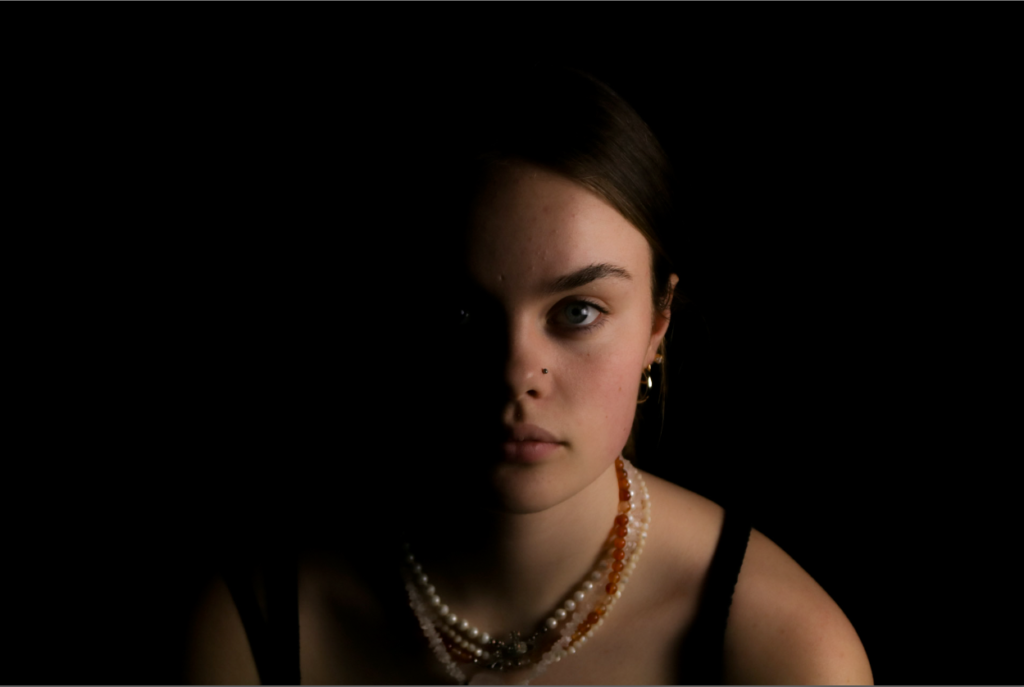Rembrandt lighting is characterized by an illuminated triangle (also called “Rembrandt patch”) under the eye of the subject on the less illuminated side of the face. It is named for the Dutch painter Rembrandt, who occasionally used this type of lighting.

Rembrandt lighting takes its name after Rembrandt Harmenszoon van Rijn, a 17th-century Dutch painter who was known for using earthy tones and golden highlights to frame the faces of his portraiture subjects.

What is the effect of Rembrandt lighting?
Rembrandt lighting will draw the viewer’s attention where the light triangle is from. This is because of the contrast between the dark and the light. It also adds a mysterious feel to the image. On top of this, it’s a simple setup to master.
Why use Rembrandt lighting?
Rembrandt lighting technique is considered one of the go-to photography lighting setups because it produces a dramatic visual effect without requiring a lot of setup. A more sophisticated version of this setup includes a reflector, which brings detail back into the shadows on the subject’s face, but even this setup requires minimal tools and associated costs. In this way, all renditions of the Rembrandt method are considered low-effort while producing high-impact photographs.
Chiaroscuro effect linking with Rembrandt lighting
Secondly, one of the reasons professional photographers go with Rembrandt lighting is to achieve a dramatic visual effect called the chiaroscuro effect. Favored in types of still life, street, and landscape photography, the chiaroscuro effect is one with the presence of shadows on parts of the subject matter with sharp contracts of lighting in others. For portraiture, this often means that the shape of the sitter’s face defines light, and the dark side of the face is defined in silhouette against a lighter background.
When they come together, light and dark can create tension. One of the things that make the chiaroscuro effect—and in turn, Rembrandt lighting—sought after is its ability to create an atmosphere and single out the individual and their character in a captivating way.
Response to Rembrandt lighting


